Buy Beginner’s ES6 Programming-Code for the Web in JavaScript – Mammoth Interactive Course at GBesy. We actively participate in Groupbuys and are committed to sharing knowledge with a wider audience. Rest assured, the quality of our courses matches that of the original sale page. If you prefer, you can also buy directly from the sale page at the full price (the SALEPAGE link is directly provided in the post).
Salepage link: At HERE. Archive:
$500 $66 – Beginner’s ES6 Programming-Code for the Web in JavaScript – Mammoth Interactive
If you want to learn to code for the web, Beginner’s ES6 Programming is the place to start. Begin your career or hobby in web development today by enrolling in this course.
In Beginner’s ES6 Programming, you will learn the fundamentals of coding in JavaScript, including ES6. You will learn how to change what is displayed on a webpage using JavaScript.
No prior experience in JavaScript is required. Web developer Chris Veillette will cover ES6 and many of its new features in depth. You will learn the newest possibilities and fundamental building blocks of JavaScript.
What is ES6?
With ES6 (ECMAScript 6th Edition), you can code for the web. ECMAScript is another name for JavaScript. ES6 has standardized features that JavaScript engines implement. ES6 is well-supported across different web browsers.
What Will I Learn?
- Get started with JavaScript basics
- Learn about ES6 and its new features
- Apply ES6 concepts in your projects
- Use build tools like Gulp and Webpack
- Compile ES6 into ES5 using Babel
Who is the target audience?
- JavaScript beginners
- JavaScript developers who want to learn ES6
Requirements
- Modern web browser
- Basic HTML/CSS knowledge is helpful but not required
You too can become a web developer by learning the popular programming language JavaScript. This course is full of practical examples. We teach you theory while also building real projects that you can put in your portfolio.
Enroll today to join the Mammoth community!
Level: Beginner, Length: 22 hours
Course Curriculum
Introduction
- Important Things to Know About the Course (2:20)
- Top 7 Things You Will Learn (5:01)
- Tips to Getting Started with Javascript (4:36)
- Common Pitfalls in Es6 and JS (4:14)
- Introduction Part 1 (9:14)
- Introduction Part 2 (5:34)
- Introduction Part 3 (3:53)
Basic Types
- Basic Types Part 1 – Numbers and Strings (11:18)
- Basic Types Part 2 – Booleans (8:32)
- Basic Types Part 3 – Booleans (Cont’d) (4:11)
- Basic Types Part 4 – Objects (11:54)
- Basic Types Part 5 – Objects (Cont’d) (15:00)
- Basic Types Part 6 – Arrays (10:43)
- Basic Types Part 7 – Arrays (Cont’d) (12:45)
Chapter 1: Variables
- 1.1 – Intro to Variables Part 1 (5:52)
- 1.2 = Intro to Variables Part 2 (9:51)
- 1.3 – Intro to Variables Part 3 (8:15)
- 1.4 – Intro to Variables Part 4 (4:06)
- 1.5 – Scoping and Intro to Let (9:40)
- 1.6 – Let Statements (2:34)
- 1.7 – Intro to Const (10:15)
- 1.8 – Summary (1:19)
Chapter 2: Operators
- 2.1 – Intro to If Statements (7:53)
- 2.2 – Equal Sign Operators (11:11)
- 2.3 – Other Comparison Operators (13:45)
- 2.4 – Nested If Statements (6:48)
- 2.5 – Logical Operators (10:50)
- 2.6 – Not Operators (9:07)
- 2.7 – Else and Else If (7:14)
Chapter 3: Functions
- 3.1 – Intro to Functions Part 1 (6:37)
- 3.2 – Intro to Functions part 2 (9:15)
- 3.3 – Intro to Functions Part 3 (9:24)
- 3.4 – Hoisting (3:41)
- 3.5 – Function Expressions (6:52)
- 3.6 – Functions Changing Non-Primitive Properties (6:13)
- 3.7 – Nested Functions Part 1 (5:20)
- 3.8 – Nested Functions Part 2 (10:17)
- 3.9 – Nested Functions Part 3 (4:54)
Chapter 4: More Functions
- 4.1 – Function Expressions (8:36)
- 4.2 – Returns and Brackets (6:48)
- 4.3 – More Examples (6:59)
- 4.4 – More Examples (Cont’d) (3:55)
- 4.5 – Default Values (14:15)
- 4.6 – Rest Parameters (10:44)
- 4.7 – Arrow Functions (10:51)
- 4.8 – Arrow Functions (Cont’d) (0:51)
Chapter 5: Switch Statements
- 5.1 – Switch Statements Part 1 (7:43)
- 5.2 – Switch Statements Part 2 (5:41)
- 5.3 – Switch Statements Part 3 (6:12)
- 5.4 – Switch Statements Part 4 (2:35)
- 5.5 – Switch Statements Part 5 (5:16)
Chapter 6: Loops
- 6.1 – Intro to Loops (3:54)
- 6.2 – While Loops (5:28)
- 6.3 – While Loops (Cont’d) (10:17)
- 6.4 – Do While Loop (5:07)
- 6.5 – Do While Loop (Cont’d) (2:20)
- 6.6 – For Loop (10:17)
- 6.7 – For Loop (Cont’d) (6:05)
- 6.8 – Controlling Loops (11:01)
- 6.9 – Closing Over For Loop (10:11)
- 6.10 – For…In and For Each (10:11)
- 6.11 – For…of (9:36)
- 6.12 – For…of (Cont’d) (3:25)
Chapter 7: DOM
- 7.1 – Intro to DOM (11:03)
- 7.2 – Intro to DOM (cont’d) (14:53)
- 7.3 – getElementbyId Part 1 (11:44)
- 7.4 – getElementbyId Part 2 (3:25)
- 7.5 – getElementbyId Part 3 (4:22)
- 7.6 – DOM Query Selector (5:02)
- 7.7 – DOM Query Selector all (8:24)
- 7.8 – Traversing the DOM (4:42)
- 7.9 – Getting and Setting ID and Class Part 1 (3:21)
- 7.10 – Getting and Setting ID and CLass Part 2 (9:52)
- 7.11 – Getting and Setting ID and CLass Part 3 (4:43)
- 7.12 – Getting and Setting ID and Class Part 4 (4:00)
- 7.13 – Creating and Appending Elements (6:39)
- 7.14 – Creating and Appending Elements (Cont’d) (7:29)
- 7.15 – Removing Elements (7:03)
Chapter 8: Events
- 8.1 – Intro To Events (9:09)
- 8.2 – Intro to Events (Cont’d) (6:32)
- 8.3 – Firing and Function Removing Events (8:04)
- 8.4 – Events Propagation (17:36)
- 8.5 – Common Design Pattern (6:54)
- 8.6 – Prevent Default (4:40)
- 8.7 – Prevent Default (Cont’d) (7:51)
- 8.8 – Key Events (3:57)
- 8.9 – Key Events (Cont’d) (9:47)
- 8.10 – DOMContentLoaded (9:30)
- 8.11 – Load Event (4:05)
- 8.12 – Load Event (Cont’d) (2:07)
- 8.13 – Recommendations (1:24)
Chapter 9: Template Literals
- 9.1 – Template Literals Part 1 (2:37)
- 9.2 – Template Literals Part 2 (14:49)
- 9.3 – Template Literals Part 3 (5:01)
- 9.4 – Template Literals Part 4 (10:09)
- 9.5 – Template Literals part 5 (4:12)
Chapter 10: Destructuring
- 10.1 – Destructuring arrays part 1 (10:45)
- 10.2 – Destructuring arrays part 2 (7:50)
- 10.3 – Destructuring arrays part 3 (9:45)
- 10.4 – Destructuring objects part 1 (5:50)
- 10.5 – Destructuring objects part 2 (9:54)
- 10.6 – Destructuring objects part 3 (7:16)
- 10.7 – Destructuring objects Part 4 (7:16)
- 10.8 – Destructuring nested objects (4:09)
- 10.9- Destructuring nested objects (cont’d) (9:01)
Chapter 11: Throw Exceptions and Try…Catch
- 11.1 – Throw Exceptions (9:20)
- 11.2 – Throw Exceptions (Cont’d) (3:02)
- 11.3 – Try…Catch Part 1 (6:48)
- 11.4 – Try…Catch Part 2 (9:50)
- 11.5 – Try…Catch Part 3 (2:47)
- 11.6 – Finally Statement (8:04)
- 11.7 – Final thoughts (2:33)
Chapter 12: Object-Oriented Programming Language
- 12.1 – OOP in JS intro Part 1 (14:33)
- 12.2 – OOP in JS intro Part 2 (7:33)
- 12.3 – OOP in JS Intro Part 3 (4:14)
- 12.4 – OOP in JS Intro Part 4 (2:37)
- 12.5 – OOP in JS Intro Part 5 (5:15)
- 12.6 – Object Constructors Part 1 (8:39)
- 12.7 – Object Constructprs Part 2 (2:09)
- 12.8 – Object Constructor Part 3 (2:33)
- 12.9 – Inheriting from Objects Part 1 (9:34)
- 12.10 – Inheriting from Object Part 2 (5:01)
- 12.11 – Inheriting from Objects Part 3 (2:18)
Chapter 13: Classes, Inheritance and Grouping
- 13.1 – Intro to Classes (8:12)
- 13.2 – Intro to Classes (Cont’d) (8:29)
- 13.3 – Inheritance Part 1 (5:20)
- 13.4 – Inheritance Part 2 (2:02)
- 13.5 – Inheritance Part 3 (7:11)
- 13.6 – Static Methods (10:42)
- 13.7 – Pros and Cons of Inheritance (3:01)
- 13.8 – Grouping Without Inheritance (11:14)
- 13.9 – Functions and Looping Practice (9:43)
- 13.10 – Functions And Looping Practice (Cont’d) (4:21)
- 13.11 – Final Thoughts (3:35)
Chapter 14: Callbacks and Promises
- 14.1 – Callbacks Part 1 (9:42)
- 14.2 – Callbacks Part 2 (5:49)
- 14.3 – Callbacks Part 3 (2:56)
- 14.4 – Callbacks Part 4 (5:20)
- 14.5 – Callbacks Part 5 (9:09)
- 14.6 – Callbacks Part 6 (3:39)
- 14.7 – Callbacks Part 7 (4:57)
- 14.8 – Promises Part 1 (5:56)
- 14.9 – Promises Part 2 (5:13)
- 14.10 – Promises Part 3 (6:15)
- 14.11 – Promises Part 4 (2:38)
- 14.12 – Promises Part 5 (8:29)
- 14.13 – Promises Part 6 (2:22)
- 14.14 – Promises Part 7 (6:36)
- 14.15 – Promises Part 8 (8:09)
- 14.16 – Promises Part 9 (3:17)
- 14.17 – Promises Part 10 (6:14)
Chapter 15: Data and Attributes
- 15.1 – Introduction (10:41)
- 15.2 – Fetching and Processing Data (9:20)
- 15.3 – Alternative Way to Append to HTML (11:28)
- 15.4 – Multiple Objects in Response (5:48)
- 15.5 – Multiple Objects in Response (Cont’d) (7:48)
- 15.6 – Loops and Data Attributes Part 1 (6:28)
- 15.7 – Looping and Data Attribute Part 2 (5:51)
- 15.8 – Loops and Data Attributes Part 3 (10:12)
- 15.9 – Final Thoughts (3:08)
Chapter 16: Syntax and Property
- 16.1 – Spread Syntax Part 1 (9:08)
- 16.2 – Spread Syntax Part 2 (2:22)
- 16.3 – Spread Syntax Part 3 (2:50)
- 16.4 – Spread Syntax Part 4 (4:52)
- 16.5 – Spread Syntax Part 5 (3:52)
- 16.6 – Rest Syntax and Method Definitions (8:40)
- 16.7 – Property Shorthand (3:52)
- 16.8 – Property Shorthand (Cont’d) (4:42)
- 16.9 – Property Names (6:00)
- 16.10 – Property Names (Cont’d) (7:21)
- 16.11 – Maps (15:13)
- 16.12 – Sets (10:14)
- 16.13 – Sets (Cont’d) (6:10)
- 16.14 – Final Thoughts (2:10)
Chapter 17: Using Babel CLI and Gulp
- 17.1 – Transpiling in Browser (10:32)
- 17.2 – Using Babel CLI part 1 (13:08)
- 17.3 – Using Babel CLI Part 2 (3:03)
- 17.4 – Using Babel CLI Part 3 (4:58)
- 17.5 – Setting up Simple Server (2:38)
- 17.6 – Setting up Simple Server (Cont’d) (2:24)
- 17.7 – Compile Using Gulp Part 1 (8:21)
- 17.8 – Compile Using Gulp Part 2 (4:52)
- 17.9 – Compile Using Gulp Part 3 (4:46)
- 17.10 – Compile Using Gulp Part 4 (4:47)
- 17.11 – Compile Using Gulp Part 5 (2:17)
- 17.12 – Compiling Using Gulp Part 6 (1:58)
Chapter 18: Linting, Bundling and Dev Server
- 18.1 – Introduction (12:38)
- 18.2 – Watch for Changes (2:06)
- 18.3 – Linting with eslint (7:23)
- 18.4 – Linting with eslint (2:58)
- 18.5 – Bundling Part 1 (5:10)
- 18.6 – Bundling Part 2 (6:47)
- 18.7 – Bundling Part 3 (1:11)
- 18.8 – Bundling Part 4 (5:19)
- 18.9 – Dev Server (5:28)
- 18.10 – Dev Server (Cont’d) (3:01)
Source Code
- Source Code
- More content!
$500 $66 – Beginner’s ES6 Programming-Code for the Web in JavaScript – Mammoth Interactive
Buy the Beginner’s ES6 Programming-Code for the Web in JavaScript – Mammoth Interactive course at the best price at GBesy.. After your purchase, you will get access to the downloads page. You can download all the files associated in your order at here and we will also send a download notification email via your mail.
Unlock your full potential with Beginner’s ES6 Programming-Code for the Web in JavaScript – Mammoth Interactive courses. our courses are designed to help you excel.
Why wait? Take the first step towards greatness by purchasing Beginner’s ES6 Programming-Code for the Web in JavaScript – Mammoth Interactive courses today. We offer a seamless and secure purchasing experience, ensuring your peace of mind. With our trusted payment gateways, Stripe and PayPal, you can confidently complete your transaction knowing that your financial information is protected.
Stripe, known for its robust security measures, provides a safe and reliable payment process. With its encrypted technology, your sensitive data remains confidential throughout the transaction. Rest assured that your purchase is protected.
PayPal, a globally recognized payment platform, offers an additional layer of security. With its buyer protection program, you can feel confident in your purchase. PayPal ensures that your financial details are safeguarded, allowing you to focus on your learning journey.
Is it secure? to Use of?
- Your identity is completely confidential. We do not share your information with anyone. So it is absolutely safe to buy the Beginner’s ES6 Programming-Code for the Web in JavaScript – Mammoth Interactive course.
- 100% Safe Checkout Privateness coverage
- Communication and encryption of sensitive knowledge
- All card numbers are encrypted using AES at relaxation-256 and transmitting card numbers runs in a separate internet hosting atmosphere, and doesn’t share or save any data.
How can this course be delivered?
- After your successful payment this “Beginner’s ES6 Programming-Code for the Web in JavaScript – Mammoth Interactive course”, Most of the products will come to you immediately. But for some products were posted for offer. Please wait for our response, it might take a few hours due to the time zone difference.
- If this happens, please wait. The technical department will process the link shortly after. You will receive notifications directly by e-mail. We appreciate your wait.
What Shipping Methods Are Available?
- You will receive a download link in the invoice or YOUR ACCOUNT.
- The course link always exists. use your account to login and download the Beginner’s ES6 Programming-Code for the Web in JavaScript – Mammoth Interactive course whenever you need.
- You only need to visit a single link, and you can get all the Beginner’s ES6 Programming-Code for the Web in JavaScript – Mammoth Interactive course content at once.
- You can do your learning online. You can be downloaded for better results and can study anywhere on any device. Make sure your system does not sleep during the download.
How Do I Track Order?
- We always notice the status of your order immediately after your payment. After 7 days if there is no download link, the system will automatically complete your money.
- We love to hear from you. Please don’t hesitate to email us with any comments, questions and suggestions.
![GBesy [GB] GBesy [GB]](https://www.gbesy.com/wp-content/uploads/2023/05/gbesy-Logo-full-100.png)





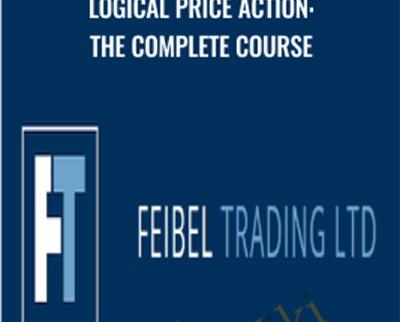





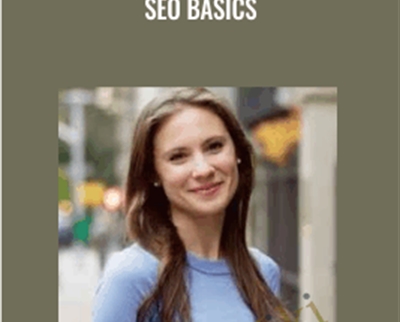





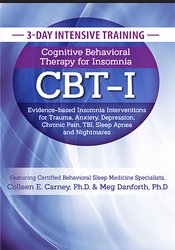





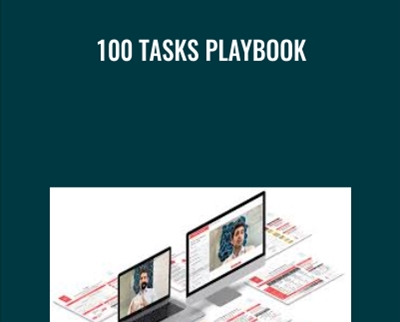







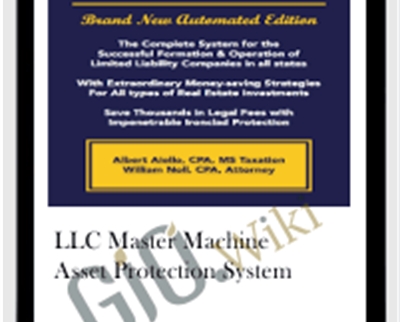
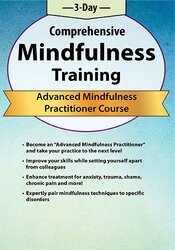
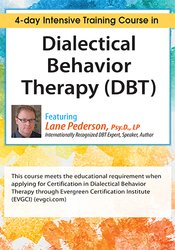


























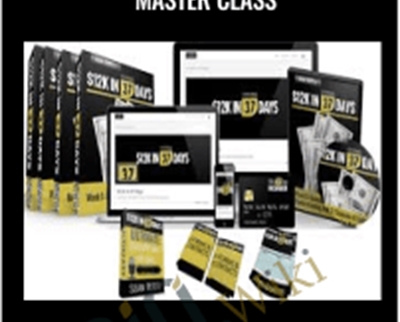
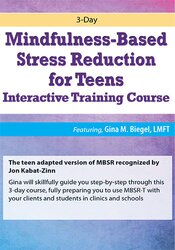

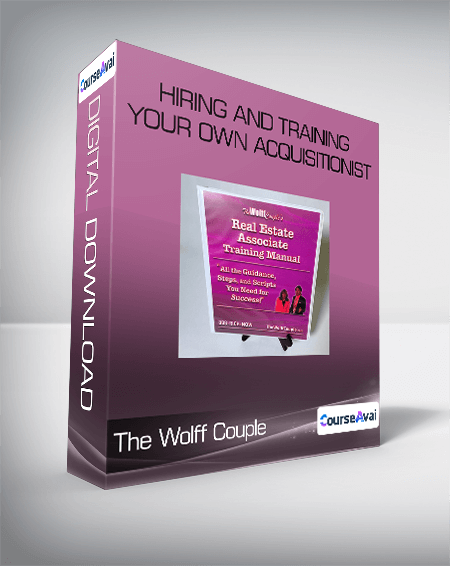

 Purchase this course you will earn
Purchase this course you will earn 




Reviews
There are no reviews yet.